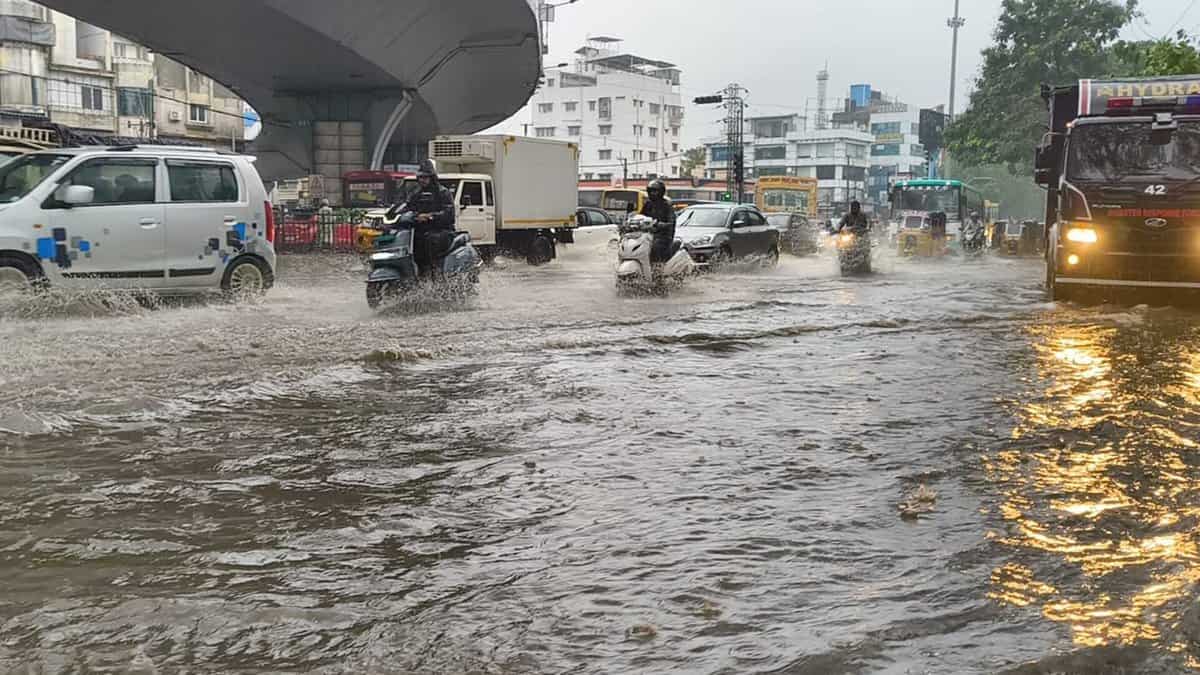The Indo-Pakistani war that preceded Bangladesh’s independence in 1971, India’s support to the ‘Mukti Vahini’ (Emancipation Army) in Bangladesh, and the diplomacy that followed, is the saga of then Prime Minister Indira Gandhi’s leadership.
I heard this tale several times as a child, narrated by my father’s friend, a Bangladeshi Hindu convert who had migrated from that country before its 1971 Liberation War, whom I called ‘Abdul Chacha’:
“I still recall the stentorian voice of ‘Bangabandhu’ Sheikh Mujibur Rahman ringing out the strident tones of his magical, inspirational speech at the Race Course Maidan (now known as Suhrawardy Udyan), in Calcutta, on March 7, 1971, calling an entire nation to rise up and take up arms against an exploitative government in erstwhile East Pakistan, informally declaring independence for Bangladesh, proclaiming, ‘The struggle this time is a struggle for our liberty. The struggle this time is a struggle for our independence,’ calling for ‘every house to turn into a fortress’, and ending on the notes of ‘Amader keu dabaya rakhta parba na (nobody can ever pin us down to the ground)’.”
The Genesis of the Tale of Valour
On October 30, 2017, UNESCO added the speech to the ‘Memory of the World Register’ as a documentary heritage. It was delivered during a period of escalating tensions between East Pakistan and the powerful political and military establishment of West Pakistan. What followed in the days immediately after is now history!
The Bangladesh Liberation War of 1971 began 18 days later when the Pakistani Army initiated ‘Operation Searchlight’ against Bengali civilians, intelligentsia, students, politicians and armed personnel and ‘Bangabandhu’ was placed under house arrest by Pakistani soldiers at the midnight of March 25 night.
By March 1971, Mujibur-led Awami League cadres were on the streets, demonstrations were rife and strikes were the order of the day. Pakistan’s army—aided by the ‘Razakars’, considered the worst traitors in Bangladesh’s history—was openly vandalizing the country. The Hamoodur Rehman Commission gave an official count of 26,000 deaths. Lakhs of refugees fled to India seeking shelter.
The Indo-Pakistani war that preceded Bangladesh’s independence in 1971, India’s support to the ‘Mukti Vahini’ (Emancipation Army) in Bangladesh, and the diplomacy that followed, is the saga of then Prime Minister Indira Gandhi’s leadership. She completely relied on her military chief, Field Marshal Sam Manekshaw.
On December 16, 1971—later officially known as Bangladesh’s ‘Vijay Diwas’—just 13 days after the start of the war, General AA Khan Niazi, in-charge of the Eastern Command of the Pakistani Army, surrendered in Dhaka, handing over his service revolver to the Indian Army’s Eastern Command In-charge Lieutenant General JS Arora.
Sheikh Hasina & the Quota System
The quota system in Bangladesh started in 1972 and was modified several times since then. In the most recent version, the quotas covered 56% of jobs in the Bangladesh civil service. Most importantly, 30% of government jobs were set aside for the children and grandchildren of freedom-fighters of the 1971 Liberation War.
The Bangladesh Supreme Court, on July 21, 2024, scrapped most of the quotas on government jobs that had sparked nationwide protests by students which killed at least 114 people earlier this year. Dismissing a lower court order, the Supreme Court’s Appellate Division directed that 93% of government jobs in the country should be open to candidates on merit. The apex court’s ruling reduced the number of reserved jobs from 56% to 7%. However, it did not fully satisfy the protesters’ demands. The court decided to reserve 5% of government jobs for the children of “freedom fighters” from the 1971 War, down from 30%.
Many young graduates were upset about the “freedom-fighter” category, believing it favoured supporters of Hasina’s ruling party, the Awami League. Critics accused Hasina’s government of influencing the judiciary, while she hinted the court’s ruling would align with students’ demands.
The government chose not to engage in peaceful talks with the protesters. Instead, it launched a major crackdown on the protesters. As the situation deteriorated, the government shut down the Internet and mobile networks across the country. But reports trickling in suggested that at least 39 protesters were killed over two days, with 33 deaths occurring on July 18, and thousands more injured. Other estimates suggested a death toll of as high as 64.
Hasina, finally, resigned on August 5, 2024, after protesters stormed her official residence, Bangabhaban, in Dhaka. She later fled the country in a military chopper along with her sister. After she left, jubilant crowds waved flags and danced in front of cameras, sometimes in indecent and pervert poses. Others smashed a statue of Hasina’s father, ‘Bangabandhu’ Mujibur Rahman, the country’s Independence hero.
Unrest Spills over across Border
In a deeply disturbing development at end-November, students at leading universities in Bangladesh—including Dhaka University—were seen trampling upon the Indian National Flag placed deliberately at the entrances to these institutions.
Some BJP leaders from West Bengal warned about stopping exports to Bangladesh indefinitely. “If the attacks on Hindus and their places of worship don’t stop by next week, we’ll enforce a five-day ban on trade,” said the BJP’s Suvendu Adhikari, a leading Opposition figure in the West Bengal Assembly. “We’ll see how they manage without our potatoes and onions,” he said.
Amid growing anger over reports of Hindus being selectively targeted and attacked in Bangladesh and their places of worship and idols being vandalized, Indian truck drivers and traders have stopped doing business with the country. Hospitals in India are also refusing to treat patients coming from Bangladesh. Rumours about the border being closed have caused fear and many Bangladeshis in India are hurrying back to their country.
And A Major Bone of Contention
Tensions between the two nations were already running high, triggered by the arrest of—and denial of bail to—Chinmoy Krishna Das, a Hindu ISKCON monk, in Chittagong, Bangladesh, accused of sedition for allegedly disrespecting Bangladesh’s national flag. Ramen Roy, who defended Chinmoy Krishna Prabhu in a legal case in Bangladesh, was brutally attacked there and his home ransacked by a group of radical Islamists. The attack seriously injured Roy, who is now battling for his life in the ICU.
And Threat to ‘Capture’ Kolkata
Tensions between Bangladesh and India have increased following recent threats made by some Bangladeshi former and present military personnel linked to extremist factions in that country claiming they would “capture Kolkata within four days”. This has led to concerns over security and stability, particularly in the border regions where migration has been rampant.
The threat to capture Kolkata—however laughable it may sound—comes amid increasing anti-India rhetoric from certain sections of Bangladeshi society. These sentiments have been linked to Bangladesh’s political instability and rising tensions between the two countries. Some Bangladeshi groups are promoting a narrative of claiming parts of Indian territory to form a ‘Greater Bangladesh’, a territory that would encompasse parts of India’s northeastern region—West Bengal, Bihar, Odisha, Jharkhand, Sikkim, Arunachal Pradesh, Assam, Meghalaya, Tripura, Mizoram, Manipur, Nagaland and, in particular, Kolkata, which they ignorantly claim historically belongs to Bangladesh. The rhetoric has sparked concern and contributed to increased surveillance and security along the Indo-Bangla border.
West Bengal Chief Minister Mamata Banerjee, on Monday (December 9), warned these Bangladeshi radicals that Indians “would not quietly sit and suck lollipop” to their claim to take over Bengal along with two other neighbouring states. Her swipe at the Bangladeshi leaders came on a day when Indian Foreign Secretary Vikram Misri visited Dhaka to meet officials of the interim government led by Muhammad Yunus in the wake of the attacks on Hindus in Bangladesh.
(The author of this article is a Defence, Aerospace & Political Analyst based in Bengaluru. He is also Director of ADD Engineering Components, India, Pvt. Ltd, a subsidiary of ADD Engineering GmbH, Germany. You can reach him at: girishlinganna@gmail.com)

















































